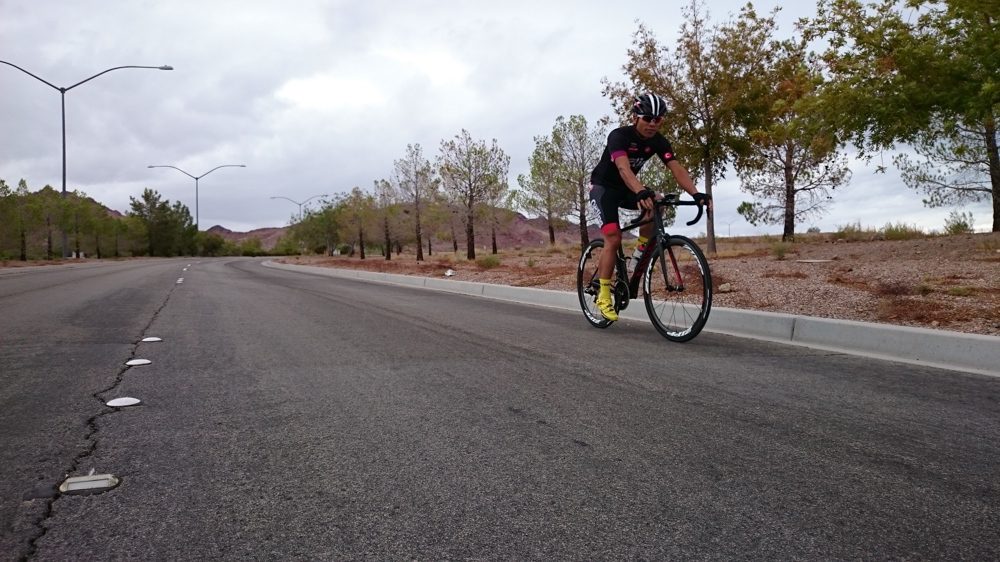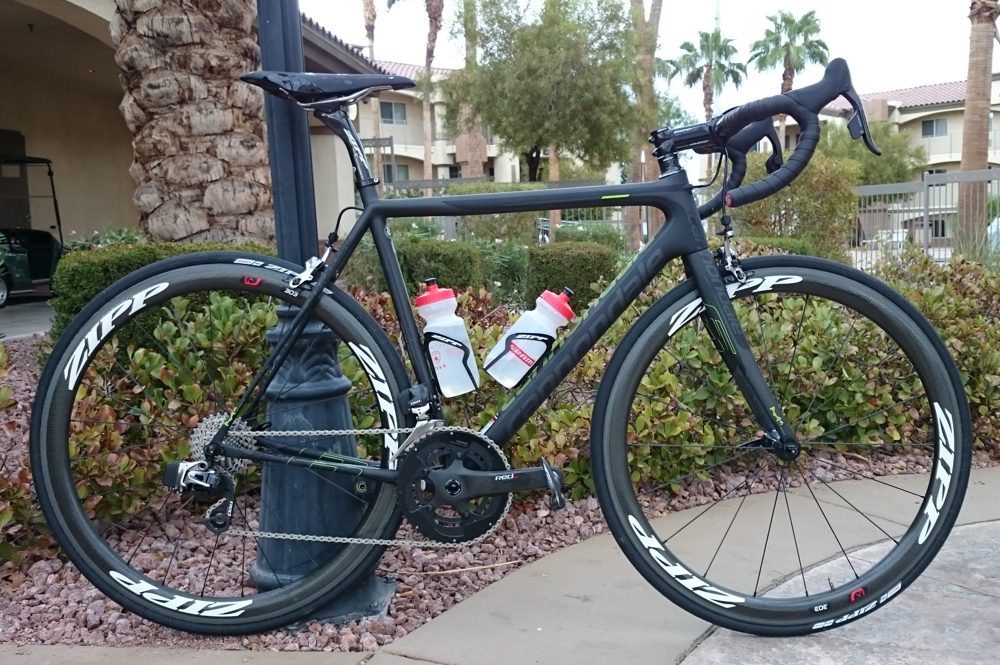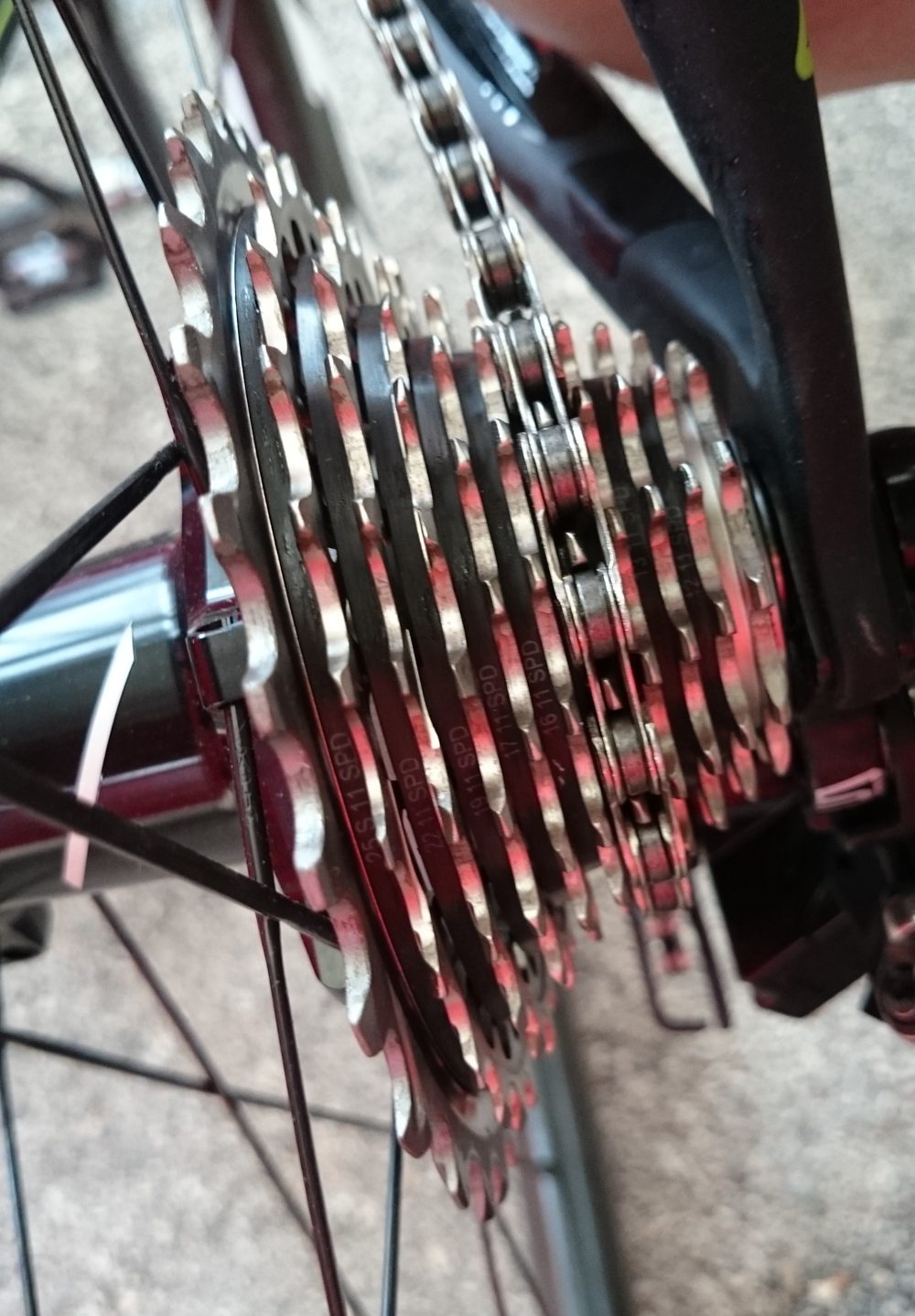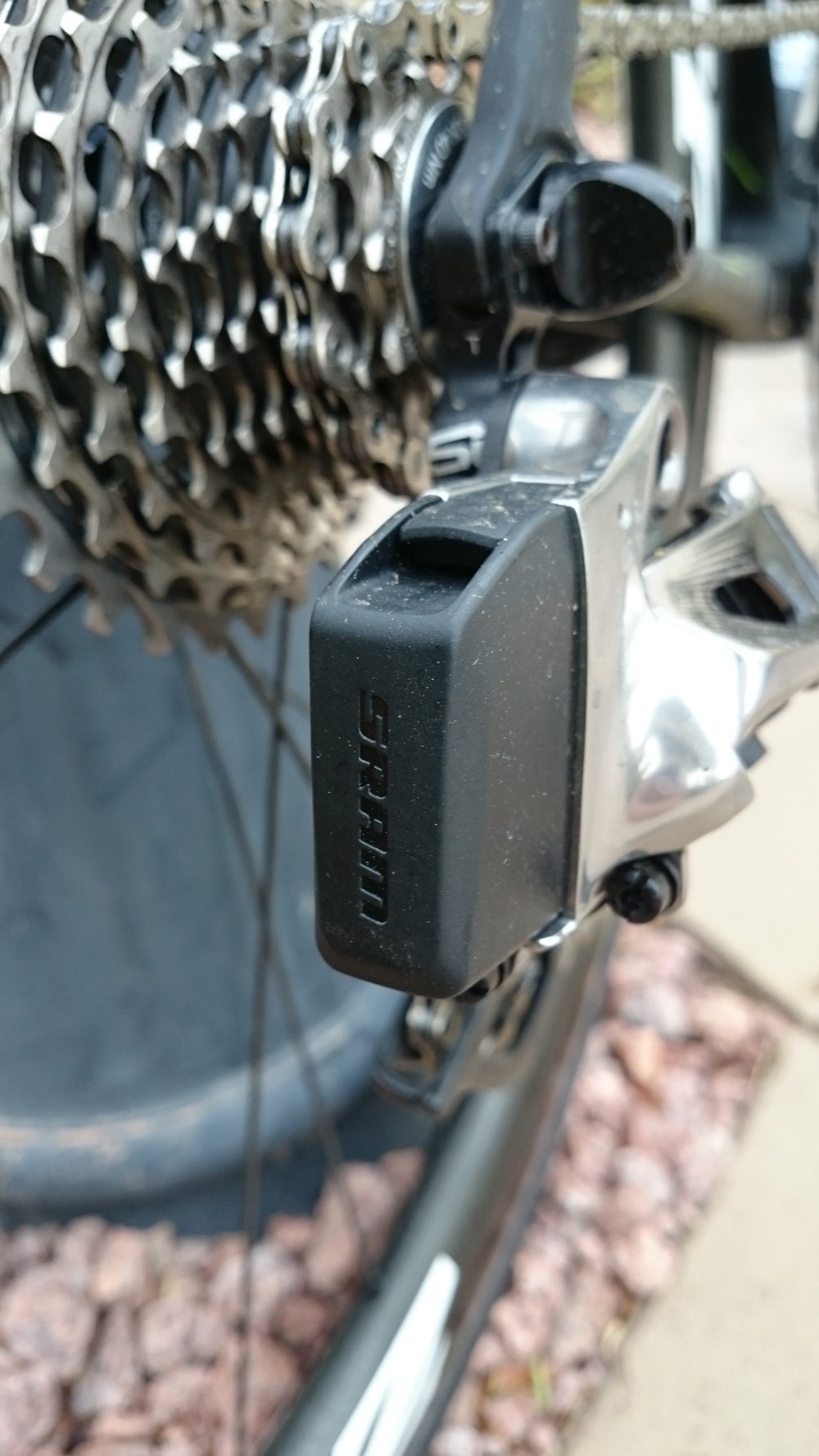First ride: SRAM Red eTap wireless groupset
I didn’t think rain would be part of the test. One week ago, wind and rain hit Boulder City, Nev., about 40 km west of Las Vegas. Before I left home, I figured I could save space in my bags by leaving the rain stuff at home. When does it ever rain in Vegas?

I didn’t think rain would be part of the test. One week ago, wind and rain hit Boulder City, Nev., about 40 km west of Las Vegas. Before I left home, I figured I could save space in my bags by leaving the rain stuff at home. When does it ever rain in Vegas?
I was with a group that SRAM had gathered to test the Chicago-based company’s new wireless gruppo, the SRAM Red eTap. The system had had its official launch at Eurobike more than a month previous. Now, it was North America’s turn with the new technology as part of Interbike.
This gruppo, however, has been ridden on this continent in the past, albeit covertly. In 2014, Axel Merckx’s under-23 team, then called Bissell Development Team, had a prototype of the eTap at Redlands Cycling Classic, Tour of the Gila and the Amgen Tour of California. During that time, the system was disguised, mechanics strung dud wires between components. According to Michael Zellmann, SRAM PR and media manager, “It took five times longer to put those little cables on and those fake boxes on than it did to install the groupset. A number of those little boxes were raisin boxes just wrapped in electrical tape because we ran out of the phony plastic boxes.” At Stage 5 of the 2014 Tour of California, SRAM was found out. While the company tried to keep their wireless system under wraps as it investigated patents, a few journalists revealed that the system really had no wires. In 2015, SRAM got eTap into the WorldTour on the bikes of Ag2r-La Mondiale. The team’s Alexis Vuillermoz won Stage 8 of the Tour de France on the Mur de Bretagne using the wireless system. On Sunday, the team of Velocio-SRAM, which included Canada’s Karol-Ann Canuel, won the world championship women’s team time trial with eTap, running 55/42-tooth chainrings and 11-26 tooth cassettes.

Before my ride, I played around with the eTap. While SRAM had looked at numerous shifter designs and configurations, it came back to its familiar shifter paddles. The paddle at your left hand, moves the chain into a larger rear cog. The right sends the chain to a smaller rear cog. To switch between the chainrings, 50/34-tooth on my test bike, you push both paddles in at the same time. “It’s race-car inspired. It comes from basically an F1 background,” Zellmann said. “Once you experience it, you’ll understand that it is truly intuitive.”
As a Shimano Di2 user, I had a bit of re-programming to do with the eTap. The upshifting on the right came easily as the muscle memory there isn’t too far off from what I’m used to. The use of both paddles to change from one chainring to the other, came next. I think the novelty of that motion meant that it was fairly easy to become accustomed to. As for using the left paddled to move to lower gears, I found that setup took me the longest, says 20 km of riding, before it felt natural. In that case, I was fighting my Di2 habits as the left shifter and paddles in the Japan-based company’s system is focused on the front derailleur. When I pushed each SRAM paddle, I notice it travelled roughly 7 mm before it issued its click, a nice bit of feedback. When the chain clunks into position, it has a definite SRAM sound and feel, which the designers and engineers spent time perfecting.

The development of eTap started five years ago. The team had to develop a reliable and secure wireless protocol that would link the components. Computer scientists, cryptographers and hackers (“Yes, we employ hackers at SRAM,” Zellmann said. “They’re still employed here.”) came up with Airea. Zallmann stresses that Airea is not ANT+, Bluetooth or Wi-Fi. It is SRAM’s proprietary 128-bit encryption protocol. Airea has strict pairing rules, so you don’t have to worry about another person controlling your shifts remotely. The only time things could be compromised is if two bikes with eTap in close proximity go through the pairing process at the same time.

Officially, eTap has had 500,000 km of testing. Zellmann thinks it’s actually closer to more than 1 million. There were a few system failures at Redlands in 2014. Zellmann said that in the past six months there have been virtually no failures. My group was going to add about 40 more kilometres onto the eTap. Of course, the first thing I tried to do once I became comfortable with the system, was to try to break it, or at least trip it up. My rapid mashing on the paddles couldn’t stump the system. It made every shift I asked it to. While the front derailleur is based on the Red 22 Yaw mechanical component, my first impression of the new electronic one is that it seems to work better than the previous model. The eTap front derailleur always knows the position of the chain on the cassette. The front mech will take that position into account when it moves the chain from ring to ring, overshifting if has to.
While the rain that fell and got kicked up by our tires during the first quarter of the ride soaked into my kit, it didn’t affect the eTap. The system has faced more than just rain. It’s been subjected to the same tumble tests, or torture tests, developed by Nokia. eTap spent some time under 1 m of water and had to survive. Testers measured button endurance. The groupset also had to deal with thermal shock, which can be as seemingly innocuous as getting pulled out of a warm vehicle before a late fall cyclocross race. So, what’s a little bit of rain?

The batteries that run the derailleurs are small and light, only 24 g each. Each lever runs on a watch-style battery, CR2032. Every component has an LED light associated with it to display battery life. Green means you have roughly 50 to 60 hours of riding, depending on the conditions. Red means 5 to 15 hours of riding. If the light blinks, charge the battery; you only have one to five hours of riding left. It takes 45 minutes to charge a cell. About halfway through the ride, the group stopped for a short break. After 30 seconds, the batteries on my bike went to sleep to save power. An accelerometer woke the system up when it was time to go. The batteries on the front and rear derailleurs are interchangeable. While the front derailleur needs more power per shift, more shifts are likely to be done at the rear. If the rear battery runs out during your ride, you can swap it with the front. How easy it is to take out a battery? At one stop light, one rider surreptitiously took the battery off of the rear derailleur of the rider in front of him. The battery-less rider didn’t notice until he started pedalling and tried to shift.

The eTap system can be outfitted with remote shifters called Blips. A Blip can get wrapped under your bar tape, wherever you like, and send signals to a derailleur. You don’t have to cut the tape to access the Blip button, just push the Blip bump. The Blips are wired to the levers. If you have a TT bike not running the eTap levers, you’ll need a BlipBox to run Blips at the end of your aero bars. Blips come in lengths of 150 mm (6 g), 230 mm (7 g), 450 mm (8 g) and 650 mm (9 g). Unfortunately, my bike was Blip-less so I couldn’t try out that feature. That will be something to test next time.
The ride ended on the Vegas strip, by site of Interbike. We were a little drier than we were mid-ride. My first 40 km on eTap went well. I’m sure they’ll be more wireless kilometres in my future.



